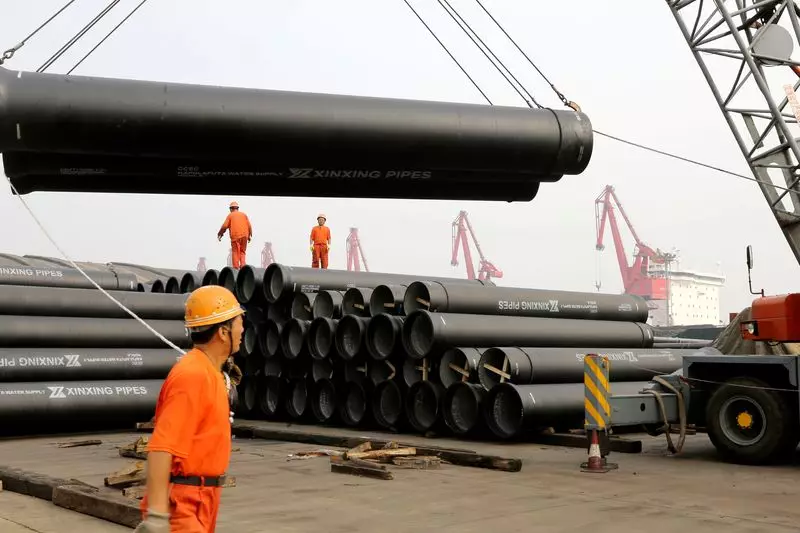In October, China’s manufacturing landscape experienced a positive shift, with renewed growth driven by escalating new orders. This resurgence, revealed by a private-sector survey, offers a glimmer of hope as the nation embarks on the final quarter of the fiscal year. The Caixin/S&P Global Manufacturing Purchasing Managers’ Index (PMI) climbed to 50.3, indicating a return to expansion after registering 49.3 in the previous month. This performance not only defied analysts’ expectations but also mirrored a broader industry trend identified in an official government survey released shortly beforehand.
A notable factor contributing to this uptick in manufacturing activity is a series of stimulus measures rolled out by the Chinese government in late September. These measures are part of a larger strategy aimed at stabilizing the economy, which is currently grappling with sluggish recovery prospects. The 2023 economic growth target, set at approximately 5%, underscores the urgency of these initiatives. As the government lays the groundwork for potential additional debt issuance exceeding 10 trillion yuan (around $1.4 trillion) over the coming years, market participants remain on high alert, looking for strategic interventions to breathe life back into the economy.
The Caixin survey disclosed that the influx of new orders surged at the fastest rate in four months, directly fueling an acceleration in manufacturing output. Manufacturers revealed a renewed confidence regarding future production, with sentiment indices ascending to the highest levels seen in five months. An increase in purchasing activities corresponds with this surge in new business, leading to higher stockpiling of goods in anticipation of sustained demand. Notably, the rise in post-production inventories indicates a backlog in shipments, a phenomenon attributed to the uptick in production capabilities amidst existing logistical challenges.
Despite the apparent improvement, the sector still faces considerable headwinds. Recent export orders have been in contraction for three consecutive months, raising concerns about the sustainability of this recovery, particularly given the uncertainties surrounding global trade dynamics. Factors such as potential shifts in U.S. policy, with fears that a Republican victory in the upcoming presidential elections could instigate tougher tariff regimes against Chinese exports, cast a shadow over the optimistic manufacturing report.
Moreover, the labor market poses an ongoing challenge. Though new order inflows have seen improvement, the rate of job losses in manufacturing has escalated—marking the sharpest declines since May 2023. Notably, anecdotal reports suggest that firms are not replenishing their workforce adequately, raising alarm about the long-term implications for employment within the sector.
As the data from October reflects a temporary revival in manufacturing activity, it is far from suggesting a complete turnaround. The pressure on the labor market remains palpable, alongside subdued input and output price levels. Looking forward, analysts emphasize that reaching the growth objectives for 2024 will significantly depend on a rebound in consumer demand. This complex interplay of growth, policy response, and economic conditions suggests that while October’s figures are promising, a stable and resilient recovery for China’s manufacturing sector is contingent on addressing underlying vulnerabilities within the economy.

